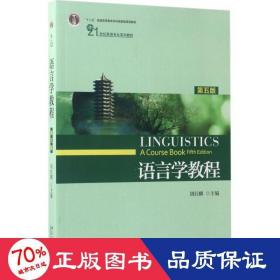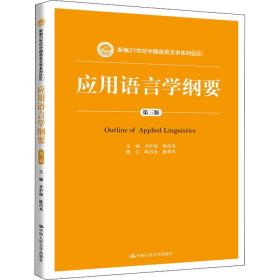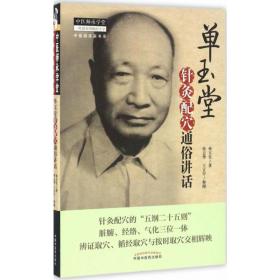
语言学教程 大中专文科语言文字 胡壮麟 主编
none
¥ 32.25 6.7折 ¥ 48 全新
库存98件
作者胡壮麟 主编
出版社北京大学出版社
ISBN9787301281932
出版时间2017-04
版次5
装帧平装
开本16
页数362页
字数250千字
定价48元
货号xhwx_1201509222
上书时间2024-11-15
- 在售商品 暂无
- 平均发货时间 29小时
- 好评率 暂无
- 最新上架
商品详情
- 品相描述:全新
- 正版特价新书
- 商品描述
-
主编:
语言学教程自1988年出版以来,改版五次,印刷九十余次,发行量达二百五十万册。目前已被高等院校普遍作为英语专业本科、硕士语言学方向必修教材以及研教材,并吸引了大量对语言学感兴趣的非英语专业读者。语言学教程(第五版)在第四版基础上听取广大师生意见修订而成。包括语言学理论介绍、语音、词汇、句法、语义、语言与认知、语言与社会、语用学、语言与文学、语言与计算机、语言学与外语、语言学流派等十二章。此次修订充分汲取外语言学研究的新理论和成果,特别是信息技术的迅猛发展带给语言学各分支的冲击的变革和发展,更为全面而系统地阐述了理论和应用语言学领域的内容,阐述方式深入迁出、脉络清晰,利于教师课上和学术课下自学。本教材另配有中文译本和练册,并为使用该教材的老师提供费的配套课件。
目录:
chapter 1 invitations to linguistics
1.1 why study language?
1.2 what is language?
1.3 design features of language
i.3.1 arbitrariness
1.3.2 duality
1.3.3 creativity
1.3.4 discement
1.4 origin of language
1.5 functions of language
1.5.1 informative function
1.5.2 interpersonal function
1.5.3 performative function
1.5.4 emotive function
1.5.5 phatic munion
1.5.6 recreational function
1.5.7 metalingual function
1.6 what is linguistics?
1.7 main branches of linguistics
1.7.1 phoics
1.7.2 phonology
1.7.3 morphology
1.7.4 syntax
1.7.5 semantics
1.7.6 pragmatics
1.8 macrolinguistics
1.8.1 ycholinguistics
1.8.2 sociolinguisties
1.8.3 anthropological linguistics
1.8.4 putational linguistics
1.9 hnportant distinctions in linguistics
1.9.1 descriptive vs.prescriptive
1.9,2 synchronic vs.diachronic
1.9.3 langue & parole
1.9.4 petence & performance
chapter 2 speech sounds
2.1 speech production and phoic transcription
2.1.1 speech production
2.1.2 phoic transcription—the ipa
2.2 consonants and vowels
2.2.1 consonants
2.2.2 vowels
2.2.3 the sounds of english
2.3 phonological analysis
2.3.1 phonemes
2.3.2 allophones
2.3.3 phonological rules
2.3.4 rule ordering
2.4 suprasegmentals
2,4.1 syllable
2.4.2 sonority scale
2.4.3 stress
2.4.4 intonation and tone
chapter 3 words and morphology
3.1 the nature of words
3.1.1 what is aword?
3.1.2 content words and function words
3.2 types of morphemes
3.3 morphological processes
3.3.1 derivation
3.3.2 poun
3.3.3 inflection
3.3.4 minor morphological processes
chapter 4 from word to text
4.1 syntactic relations
4.1.1 itional relation
4.1.2 relation of substitutability
4.1.3 relation ot co occurrence
4.2 grammatical construction and its constituents
4.2.1 grammatical construction
4.2.2 immediate constituents
4.2.3 endocentric and exocentric constructions
4.2.4 coordination and subordination
4.3 syntactic function
4.3.1 subject
4.3.2 predicate
4.3.3 obiect
4.3.4 the relation between classes and functions
4.4 category
4.4.1 number
4.4.2 gender
4.4.3 case
4.4.4 agreement
4.5 phrase,clause and sentence
4.5.1 phrase
4.5.2 clause
4.5.3 sentence
4.6 recursiveness
4.6.1 conjoining
4.6.2 embed
4.7 beyond the sentence
4.7.1 sentential connection
4.7.2 cohesion
4.7.3 coherence
chapter 5 meaning
5.1 meanings of"meaning"
5.2 the referential theory
5.3 sense relations
5.3.1 synonymy
5.3.2 antonymy
5.3.3 hyponymy
5.4 ponential analysis
5.5 sentence meaning
5.5.1 cognitive semantics
5.5.2 logical semantics
chapter 6 language and cognition
6.1 what is cognition?
6.2 three approaches to language and cognition
6.3 what is ycholinguistics?
6.4 language acquisition
6.4.1 holophrastic stage
6.4.2 two word stage
6.4.3 stage of three word utterances
6.4.4 fluent grammatical conversation stage
6.5 language prehension
6.5.1 word recognition
6.5.2 prehension of sentences
6.5.3 prehension of text
6.6 language production
6.6.1 access to words
6.6.2 generation of sentences
6.6.3 written language production
6.7 what is cognitive linguistics?
6.8 construal and construal operations
6.8.1 attention/salience
6.8.2 judgment/parison
6.8.3 perspeetive/situatedness
6.9 categorization
6.9.1 basic level
6.9.2 superordinate level
6.9.3 subordinate level
6.10 image schemas
6.11 metaphor
6.11.1 structural metaphors
6.11.2 orientational metaphors
6.11.3 ontological metaphors
6.12 metonymy
6.12.1 whole icm and lts part(s)
6.12.2 parts of anicm
6.13 blen theory
……
chapter 7 language,culture,and society
chapter 8 language in use
chapter 9 language and literature
chapter 10 language and puter
chapter 11 second and foreign language teaching
chapter 12 theories and schools of modern linguistics
bibliography
glossary and index
内容简介:
语言学教程自1988年出版以来,改版四次,印刷八十余次,发行量达二百万册。目前已被高等院校普遍作为英语专业本科、硕士语言学方向必修教材以及研教材,并吸引了大量对语言学感兴趣的非英语专业读者。是出名的语言学教材,具有较高的社会影响力和、科研认可度。此次改版,编辑部事先通过网上信息搜集、访谈等方式,一线教师和对该教材的使用情况进行了调查。后经本书主编、副主编和出版社方面的讨论,一致达成如下修改方案:1.难度上不做大的变动。2.全书的体框架不变,章节不变。3.根据一线教师的需求,一方面在教程中增加一些生动的,贴近生活的例子来解释、说明专业术语和理论;另一方面,内容更新,与时俱进,近些年来语言学研究的新发展和新热点加以补充和阐释,如将近些年来很热点的认知语言学部分进行扩充等。但从页数虑,全书增加的内容版面要在第四版的10%以内。4.排版时缩小行距,使用英文版式,减少页数。以便定价让更能接受。
作者简介:
胡壮麟,北京大学教授、博导,系统功能语言学的代表学者,清华大学双聘教授、北京师范大学兼职博导。被42所大学聘为兼职教授或客座教授。完成专著 4部,主编7部,合著、合编14 部,译著1部、206篇。
相关推荐
-

语言学教程 大中专文科语言文字 新华正版
全新保定
¥ 46.13
-

语言学史教程 大中专文科语言文字 新华正版
全新保定
¥ 28.40
-

公关语言学 大中专文科社科综合 新华正版
全新保定
¥ 28.90
-

影视语言学教程 大中专文科文学艺术 姜晓
全新北京
¥ 29.85
-

语言学教程 大中专文科语言文字 胡壮麟 主编
全新北京
¥ 14.15
-

语言学教程(第5版中文本) 大中专文科文教综合
全新保定
¥ 33.54
-

新编应用语言学 大中专文科经管 郭熙 编
全新北京
¥ 31.15
-

语言学概论 大中专文科文教综合 王红旗 编
全新北京
¥ 12.75
-

公关语言学 大中专文科社科综合 贺阳 编
全新北京
¥ 15.75
-

应用语言学纲要 第3版 大中专文科经管
全新保定
¥ 36.35
— 没有更多了 —













以下为对购买帮助不大的评价